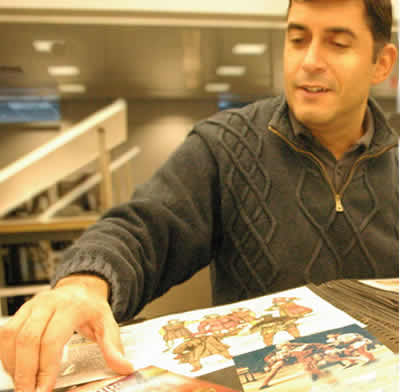 |
 |
 |
|
News & Notices
News From:
Commissions
Conference & Stage Expo
For the Record
 |
Rafael Jaen, left, reviews elements which can combine to create the perfect portfolio. He will also be part of the Member Author Book Signing on Thursday March 15 from 1:30to 2:30 p.m. at the USITT Boutique. Photo/Courtesy of Rafael Jaen
|
|
|
Planning, Feedback Keys
To Good Portfolio Reviews Designers and technologists, do you want to know how your work really rates in the industry? Or would you like to share your years of experience helping out a newcomer? The opportunity is there at the portfolio reviews scheduled by the Costume Design & Technology Commission during the 2007 Conference & Stage Expo in Phoenix. Other interest areas have reviewers as well (See related story concerning lighting.) Volunteering as a reviewer can be quite inspiring and helpful to both the interviewee and the mentor. Having the courage to get a critique from professionals in the field can be of great value for the young designer/technician in building self-confidence and setting goals. Rafael Jaen, author of Developing and Maintaining a Design-Tech Portfolio and chair of the Costume Design & Technology portfolio review committee, suggests part of the excitement in putting a portfolio together includes the ability to plan details such as page layout, content variety, and project sequencing. The portfolio then becomes a showcase of the designer/technician's process, resourcefulness, and artistry. The next challenge is to present this showcase, and special attention needs to go into some specific aspects. Mr. Jaen offers these tips:
Mr. Jaen will sign copies of his book during the Member Author book signing session Thursday, March 15 at Stage Expo. Anyone wishing to sign up for a costume portfolio review or as a volunteer reviewer can contact Mr. Jaen at Rafael_jaen@emerson.edu. |
||
United States Institute for Theatre Technology, Inc.:
© 2007 Volume XLVII, Number 2